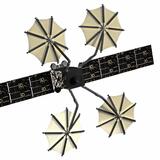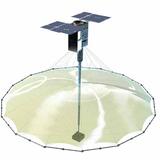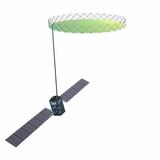“Save the rainforest” is not just a rally cry to protect the biodiversity of our planet’s forests. It’s also our best defense against climate change.
Earth’s forests are essentially the lungs of our planet, absorbing carbon dioxide – a major contributor to global warming – and replenishing life-giving oxygen. For millions of years, forests have helped maintain a delicate carbon balance throughout the planet. Until now.
As a result of wildfires and rapid deforestation, the Amazon is currently emitting more carbon than it can absorb. This reality, which is one that many of the world’s forests are currently facing, has devastating implications for us and our planet.
Analyzing which way our forests’ carbon cycles tip globally is critical to addressing climate change. Unfortunately, scientist can’t realistically catalog, map and measure the mass of every forest and tree from the ground. Despite moderate success capturing carbon dioxide levels from airplanes, scientists have never been able to get a holistic picture of the dynamic changes of Earth’s fluctuating carbon levels. To do that, they need a persistent vantage point.






